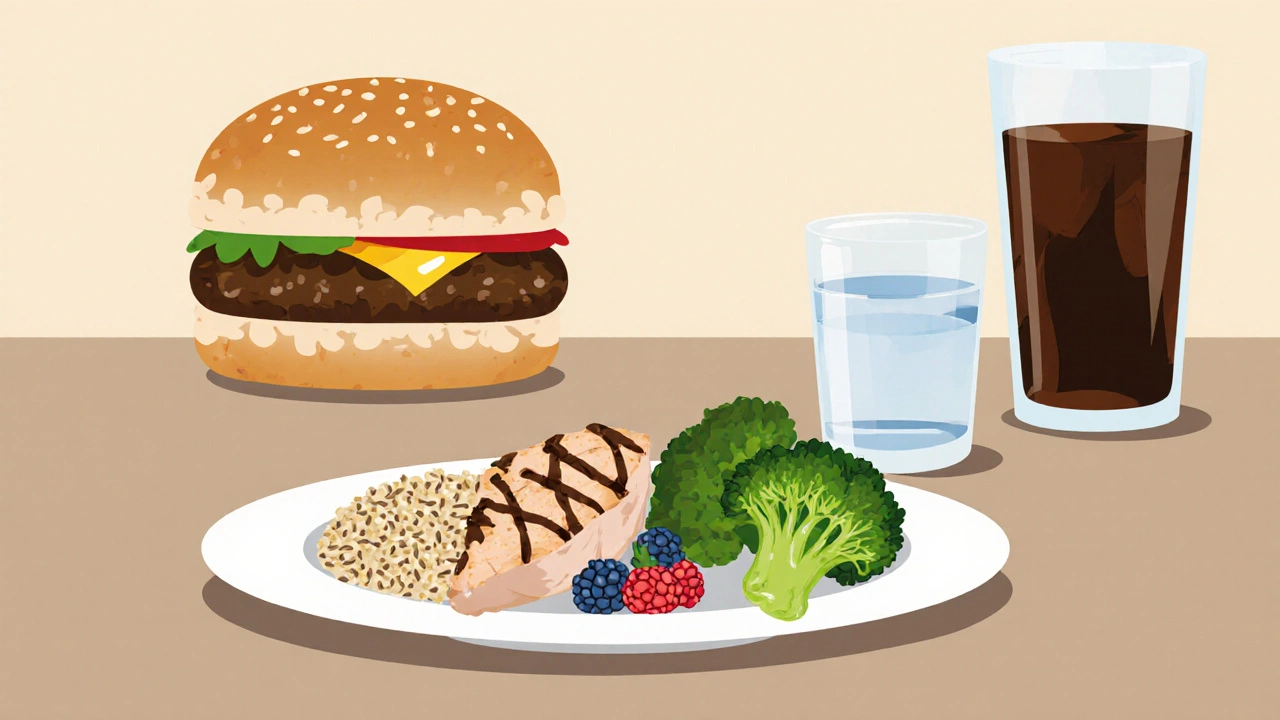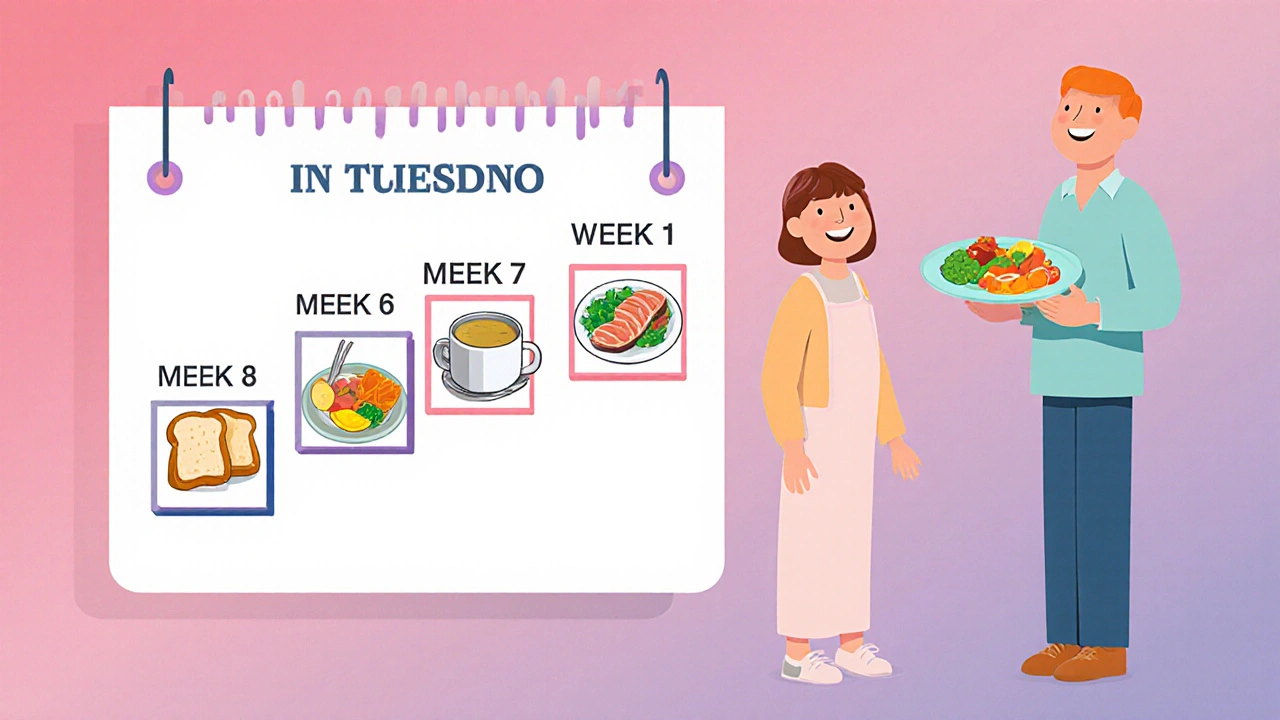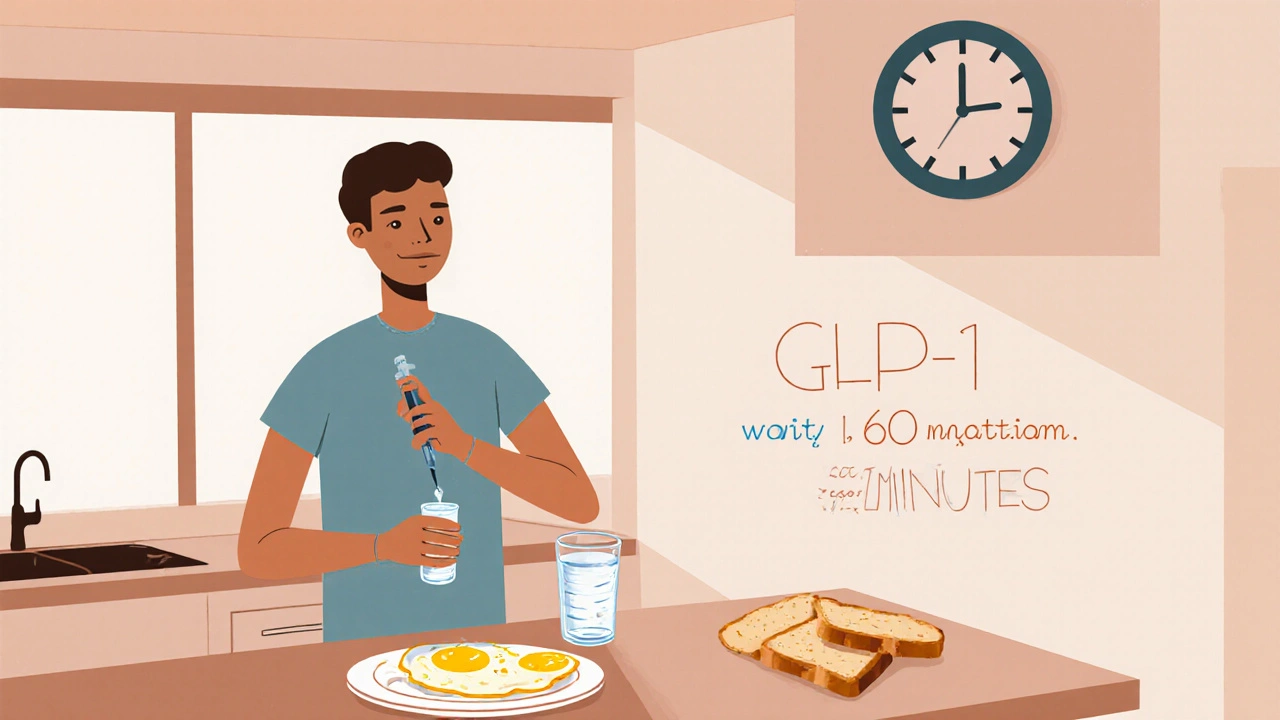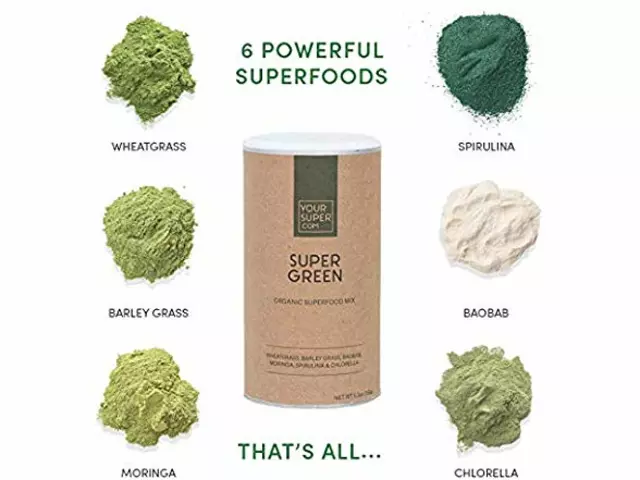GLP-1 Dose Titration Calculator
Dose Titration Guidance
Based on FDA guidelines and 2023 research, this calculator helps you safely increase your dose while minimizing GI side effects.
Important Medical Guidance
If vomiting occurs more than twice a week, hold your dose for 7-10 days and restart at your previous level. Never double up on missed doses.
More than 10 million Americans are now using GLP-1 receptor agonists like Ozempic, Wegovy, and Trulicity - not just for diabetes, but for weight loss too. But for nearly half of users, the benefits come with a price: nausea, vomiting, bloating, diarrhea, or constipation. These aren’t just minor inconveniences. They’re the #1 reason people quit these medications. The good news? Most of these side effects can be managed - and often avoided - with smart meal planning and careful dose adjustments.
Why GLP-1 Drugs Cause GI Problems
GLP-1 medications work by slowing down how fast your stomach empties. That’s why you feel full longer and eat less. But it also means food sits in your stomach longer, triggering nausea and bloating. These drugs also send signals to your brain’s vomiting center, which is why even small meals can feel overwhelming. The side effects aren’t random - they’re directly tied to how fast your body is adjusting to the drug and what you’re eating.Timing Matters: When You Take the Dose and Eat
When you take your GLP-1 shot matters more than you think. For once-weekly drugs like semaglutide (Ozempic, Wegovy), taking it first thing in the morning - on an empty stomach with just water - reduces nausea by 25-30% compared to taking it at night. Why? Your body’s natural rhythm makes it more tolerant to the drug in the morning. You also want to wait 30 to 60 minutes after your injection before eating anything. Jumping straight into breakfast right after your shot? That’s a recipe for nausea.Meal Composition: What to Eat (and What to Avoid)
Forget the idea of “eating normally” while on GLP-1 drugs. Your stomach can’t handle what it used to. The most successful users follow a simple rule: low volume, high protein, low fat, low sugar.- Protein: Aim for 25-30 grams per meal. Eggs, lean chicken, tofu, Greek yogurt, or a protein shake work well.
- Fat: Keep it under 15 grams per meal. Avoid fried foods, heavy creams, butter, and fatty cuts of meat.
- Carbs: Stick to complex carbs like oats, quinoa, or sweet potatoes. Avoid more than 20 grams of simple sugars (soda, candy, juice) in one sitting.
- Portion size: Keep meals between 300-400 calories. Eating a 600+ calorie meal during titration is the #1 mistake people make.
Fluids: The Silent Culprit
Drinking too much with meals makes nausea worse. Liquids fill up your stomach faster and push food through too quickly, triggering discomfort. Limit fluids to 120-180 ml (about 4-6 ounces) per meal. Avoid carbonated drinks completely - soda and sparkling water can cause bloating and pressure that feels like a stomach cramp. Drink water between meals instead. Sipping slowly throughout the day keeps you hydrated without overwhelming your stomach.
Dose Titration: Go Slow or Go Home
The standard titration schedule for Wegovy is 16-20 weeks to reach the full 2.4 mg dose. But that’s too fast for many people. Experts now recommend extending it to 20-24 weeks - especially if you’ve had GI issues before. Here’s the real rule: Don’t increase your dose until your nausea is gone for 7 full days. If you’re still feeling queasy after a week, stay at your current dose. No rush. The FDA and Endocrine Society both say: if vomiting happens more than twice a week, hold the dose for 7-10 days. Restart at the previous level. This isn’t failure - it’s strategy. A 2023 JAMA study showed patients who followed symptom-guided titration had 37% lower dropout rates than those who stuck to the clock. One patient on Reddit said: “I stayed at 1.7 mg for 6 weeks because I was still nauseous. When I finally went up, it was smooth sailing.”What to Do When Nausea Hits
If you feel sick after a dose increase:- Stick to clear liquids for 24-48 hours: water, broth, herbal tea.
- Then move to bland solids: toast, rice, bananas, applesauce (the BRAT diet).
- Don’t force food. Eat small bites every 2-3 hours.
- Rest. Physical activity can make nausea worse in the first few days.
When to Call Your Doctor
Most GI side effects fade over time. But some need attention:- Vomiting more than twice a week
- Signs of dehydration: dark urine, dizziness, dry mouth
- Severe abdominal pain or bloating that doesn’t improve
- Unexplained weight loss beyond the expected range

Real-World Success Stories
Kaiser Permanente tracked 1,200 patients starting GLP-1 therapy. Those who got a structured meal plan and titration guide had a 78% reduction in nausea within two weeks. Novo Nordisk’s Wegovy program now includes free access to dietitians for the first six months - and users in that program are 18% more likely to stay on the drug. One woman in her 50s, starting Wegovy for prediabetes, told her doctor: “I thought I’d have to give up eating.” Instead, she learned to eat five small meals a day: a protein-rich breakfast, a handful of almonds mid-morning, a lean turkey lunch, a Greek yogurt snack, and a light dinner. Within 10 weeks, her nausea vanished. She lost 22 pounds. She’s still on it 18 months later.What’s Next: Personalized Support and AI Tools
The future of GLP-1 management is getting smarter. Verily Life Sciences is testing an AI app that tracks your nausea, appetite, and meals daily - then suggests the best time to increase your dose. Early results show a 28% drop in discontinuations. Washington University is testing “gut training” - slowly increasing meal volume over weeks to build tolerance. Early data shows a 40% drop in long-term nausea. The message is clear: GLP-1 drugs work - but only if you stay on them. And staying on them isn’t about willpower. It’s about strategy.How long do GLP-1 GI side effects last?
Most nausea and vomiting peak around week 4 and start improving by week 8. By week 56, only about 5.5% of users still report nausea. Diarrhea and constipation may last longer but usually stabilize after 3-6 months. The key is patience - symptoms get better with time if you don’t rush the dose.
Can I drink alcohol on GLP-1 medications?
It’s best to avoid alcohol during the first 8-12 weeks of treatment. Alcohol irritates the stomach and can worsen nausea and vomiting. Once your body adjusts, occasional light drinking may be okay - but always drink with food and limit to one serving. Never drink on an empty stomach.
Should I take anti-nausea meds with GLP-1 drugs?
Over-the-counter options like ginger supplements or peppermint tea can help mild nausea. For persistent symptoms, your doctor may prescribe ondansetron (Zofran) short-term. But don’t rely on meds to mask the problem. The real fix is adjusting your meals and dose timing. Medications only help you get through the transition - they don’t solve the root issue.
What if I miss a dose? Should I double up next week?
Never double up. If you miss your weekly dose, take it as soon as you remember - but only if it’s within 5 days. If it’s been more than 5 days, skip the missed dose and wait until your next scheduled day. Doubling up can cause severe nausea or vomiting. Consistency matters more than catching up.
Are some GLP-1 drugs easier on the stomach than others?
Yes. Short-acting drugs like exenatide (Byetta) cause more nausea and vomiting. Long-acting ones like semaglutide (Ozempic, Wegovy) and dulaglutide (Trulicity) are better tolerated long-term, though they may cause more diarrhea. Liraglutide (Saxenda) tends to be gentler during initial titration. But the biggest factor isn’t the drug - it’s how slowly you increase the dose and what you eat.
Can I eat fruit on GLP-1 medications?
Yes - but choose wisely. Berries, apples, and pears are fine in small portions (½ cup). Avoid bananas, grapes, mangoes, and dried fruit during titration - they’re high in sugar and can spike nausea. Always pair fruit with protein - like a handful of almonds or a spoon of Greek yogurt - to slow digestion.
Is it normal to feel full all the time?
Yes. Feeling full quickly is the whole point of GLP-1 drugs. But if you feel overly full, bloated, or like your stomach is “stuck,” you might be eating too much or too fast. Try chewing slowly, stopping when you’re 80% full, and avoiding large meals. This sensation improves over time as your body adapts.







Edward Ward
15 November 2025 - 20:29 PM
I’ve been on Wegovy for 14 months now, and honestly? The first six weeks felt like my stomach was staging a coup. I was nauseous every damn morning-until I started eating protein first, no carbs, and waiting 45 minutes after my shot. I used to think ‘just push through’ was the answer, but nope. Slowing down the titration-staying at 1.7mg for six weeks like the article said-was the game-changer. My body didn’t rebel anymore. Also, ditching sparkling water? Huge. I thought seltzer was ‘healthy,’ but it turned my gut into a pressure cooker. Now I sip still water between meals, and my bloating’s practically gone. Don’t rush. Don’t force. Just adapt.
Andrew Eppich
17 November 2025 - 01:49 AM
It is truly remarkable how many individuals today seem to believe that pharmaceutical interventions can be seamlessly integrated into existing dietary habits without any meaningful behavioral modification. The notion that one can continue consuming high-carbohydrate, high-fat meals while simultaneously expecting optimal pharmacological tolerance is not merely misguided-it is fundamentally illogical. The human digestive system is not a machine that can be overridden by molecular signaling without consequence.
Jessica Chambers
18 November 2025 - 05:59 AM
So… you’re telling me I have to *not* eat my 800-calorie burrito bowl after my shot? 😭
Shyamal Spadoni
19 November 2025 - 23:38 PM
GLP-1 drugs are just the tip of the iceberg bro… Big Pharma and the FDA are pushing these because they want you dependent on pills while they quietly phase out real food. Look at how fast they banned sugar substitutes and now they want you eating ‘protein shakes’ like a lab rat. They don’t care if you’re nauseous-they care if you keep buying. I tried this stuff for 3 weeks, felt like death, and then I went back to eating real meat, potatoes, and butter. My belly stopped hurting and my energy came back. Wake up people. This isn’t medicine-it’s control.
Ogonna Igbo
20 November 2025 - 19:04 PM
USA people always think they need some fancy science to eat properly. In Nigeria we just eat small portions, no junk, and drink water when we’re not eating. No 24-week titration schedules, no protein shakes, no apps. We just eat like humans. Your stomach is weak because you eat like a pig every day. Stop blaming the drug and start blaming your plate. We don’t need your American overthinking to stay healthy.
BABA SABKA
22 November 2025 - 00:14 AM
Bro, I’ve been on Ozempic for 10 months. The key isn’t the drug-it’s the fucking meal prep. I meal prep like it’s a military operation. 4 oz grilled chicken, 1/2 cup quinoa, steamed broccoli. No sauce. No oil. No ‘treats.’ I eat at 11am sharp, 2 hours after my shot. If I feel even a whisper of nausea, I drop back a dose. I don’t care what the chart says. My body’s the algorithm. And yeah, I lost 47 lbs. But I didn’t do it by ‘hoping’ it’d get better. I did it by being a goddamn disciplined animal. You want results? Stop treating your gut like a party venue.
Chris Bryan
22 November 2025 - 09:53 AM
They’re lying about the 5.5% nausea rate. I checked the FDA’s Adverse Event Reporting System. Over 40% of reports mention severe vomiting and gastroparesis. They’re hiding it because they want you on it forever. This isn’t weight loss-it’s a slow gastric paralysis scheme. And the ‘dietitians’ they give you? Paid by Novo Nordisk. Wake up. They don’t want you healthy-they want you addicted.
ASHISH TURAN
22 November 2025 - 20:48 PM
I followed the 2-hour rule after my shot and it made all the difference. Also, I started eating 5 small meals-protein with every one. No more three big meals. My nausea dropped from 8/10 to 1/10 in 10 days. I didn’t even need ginger or Zofran. Just patience and structure. The article’s right-this isn’t about willpower. It’s about respecting your body’s new limits.
Ryan Airey
23 November 2025 - 06:09 AM
Let’s be real-most people who quit GLP-1 drugs aren’t ‘tired of nausea.’ They’re just lazy. You don’t want to meal prep? Fine. You don’t want to wait 60 minutes? Cool. But don’t act like the drug failed you. It’s your own unwillingness to change that’s the problem. I’ve seen patients who followed this to the letter lose 60 lbs in 6 months. And they didn’t cry about it. They adapted. You’re not broken. You’re just unprepared.